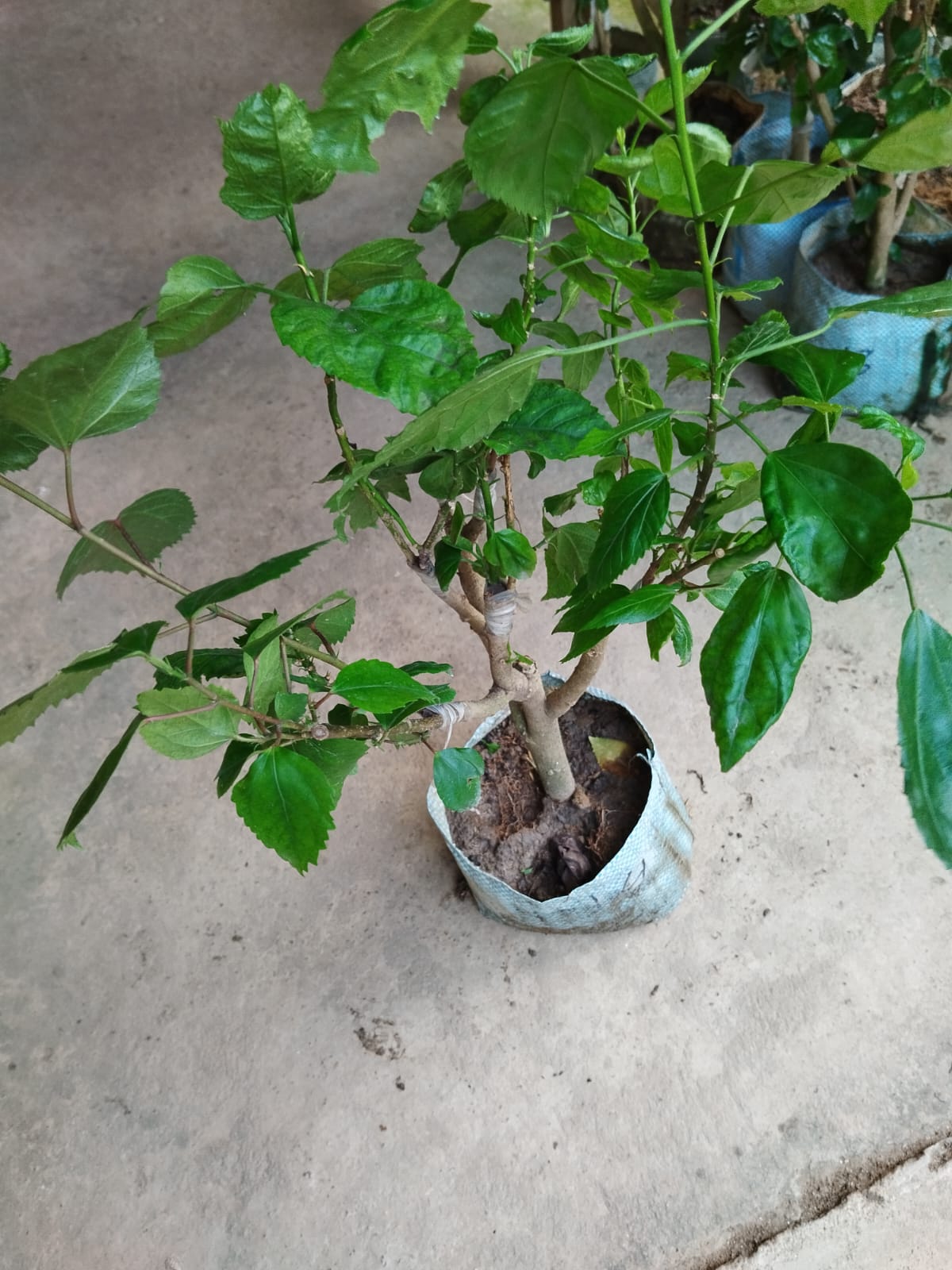PlantsKingdom
Multi Grafted Hibiscus(10 Different Colour)|Colorful Hibiscus Blooms
Couldn't load pickup availability
A multi-grafted Hibiscus flower plant is an ornamental plant created by grafting multiple varieties of Hibiscus onto a single rootstock. This technique allows the plant to produce flowers in various colors and forms, offering a stunning display of diversity on one plant. Here’s a detailed description:
Description of Multi-Grafted Hibiscus Flower Plant:
- Botanical Name: Hibiscus rosa-sinensis (common species for grafting)
- Common Names: Tropical Hibiscus, Chinese Hibiscus, Rose Mallow
Physical Characteristics:
- Stem and Trunk: The plant typically has a woody stem or trunk that supports the multiple grafts. The bark is usually smooth and grayish.
- Leaves: Hibiscus leaves are typically dark green, glossy, and ovate with serrated edges. The leaves are arranged alternately along the stem.
- Flowers: The most remarkable feature of the multi-grafted Hibiscus is its flowers. Due to the different grafted varieties, the plant can produce blooms in an array of colors, including red, pink, yellow, white, orange, and even bi-colored patterns. The flowers can vary in size and form, from single to double-petaled varieties, and are usually large, showy, and trumpet-shaped.
Growing Conditions:
- Light: Hibiscus plants thrive in full sun, needing at least 6-8 hours of direct sunlight daily to promote abundant flowering.
- Soil: Well-draining soil is crucial. A rich, loamy soil with organic matter is ideal. Hibiscus also does well in slightly acidic to neutral pH.
- Water: These plants require consistent moisture but should not be waterlogged. Water deeply and regularly, allowing the top inch of soil to dry out between watering.
- Temperature: Hibiscus prefers warm temperatures, ideally between 60°F to 90°F (15°C to 32°C). They are sensitive to frost and should be protected or brought indoors in cooler climates.
- Fertilizer: Use a balanced, water-soluble fertilizer every couple of weeks during the growing season (spring and summer). Reduce feeding during the dormant period in fall and winter.
Maintenance:
- Pruning: Regular pruning helps maintain shape, encourages bushier growth, and promotes more blooms. Prune in early spring before new growth begins.
- Pests and Diseases: Common pests include aphids, spider mites, whiteflies, and mealybugs. Diseases can include fungal infections such as leaf spot and root rot, often caused by overwatering.
Grafting Technique:
- Selection of Scions: Choose healthy scions from different Hibiscus varieties with desirable flower colors and forms.
- Grafting Method: T-budding and cleft grafting are common methods used. The grafting should be done during the growing season for higher success rates.
- Post-Grafting Care: Keep the grafted plant in a controlled environment with adequate humidity and indirect light until the grafts have taken. Gradually acclimate it to full sun.
Advantages of Multi-Grafted Hibiscus:
- Diverse Flower Colors: A single plant can display multiple flower colors and forms, making it a stunning centerpiece in any garden.
- Space-Saving: Ideal for gardeners with limited space who want to enjoy a variety of Hibiscus flowers without planting multiple plants.
- Increased Interest: The diverse display of blooms can attract more pollinators, such as bees and butterflies, to the garden.
Materials
Materials
Shipping & Returns
Shipping & Returns
Dimensions
Dimensions
Care Instructions
Care Instructions




Image with text
Pair text with an image to focus on your chosen product, collection, or blog post. Add details on availability, style, or even provide a review.
-
Free Shipping
Pair text with an image to focus on your chosen product, collection, or blog post. Add details on availability, style, or even provide a review.
-
Hassle-Free Exchanges
Pair text with an image to focus on your chosen product, collection, or blog post. Add details on availability, style, or even provide a review.



